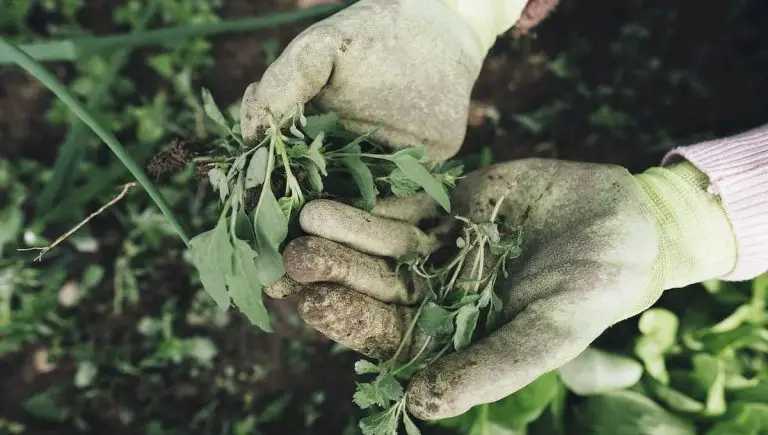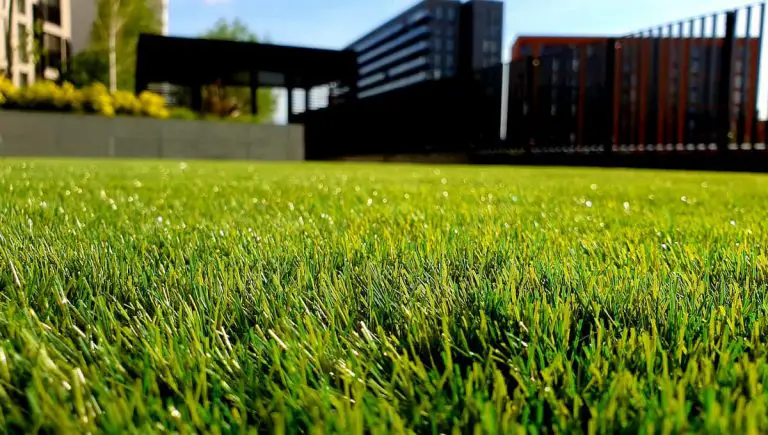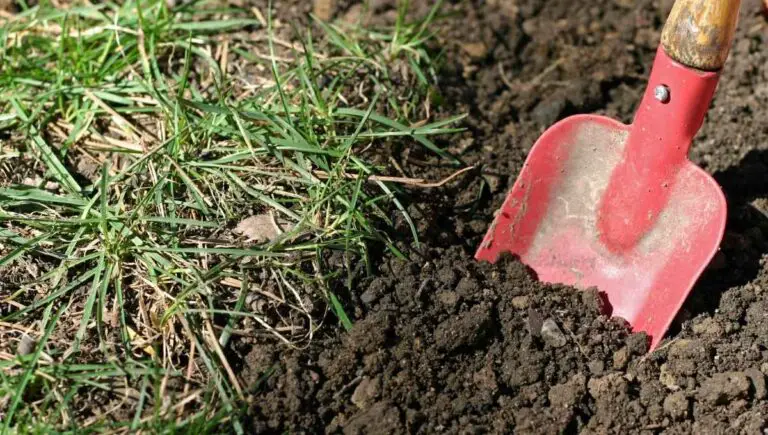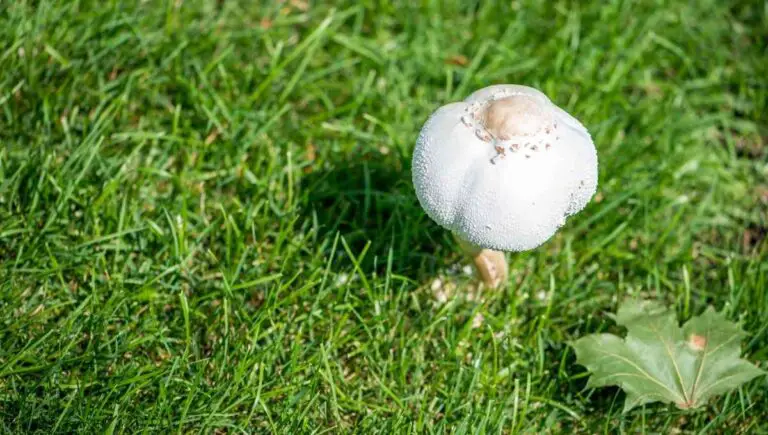Can a Weed Eater Cut Your Finger Off? (How to Avoid Mishaps)
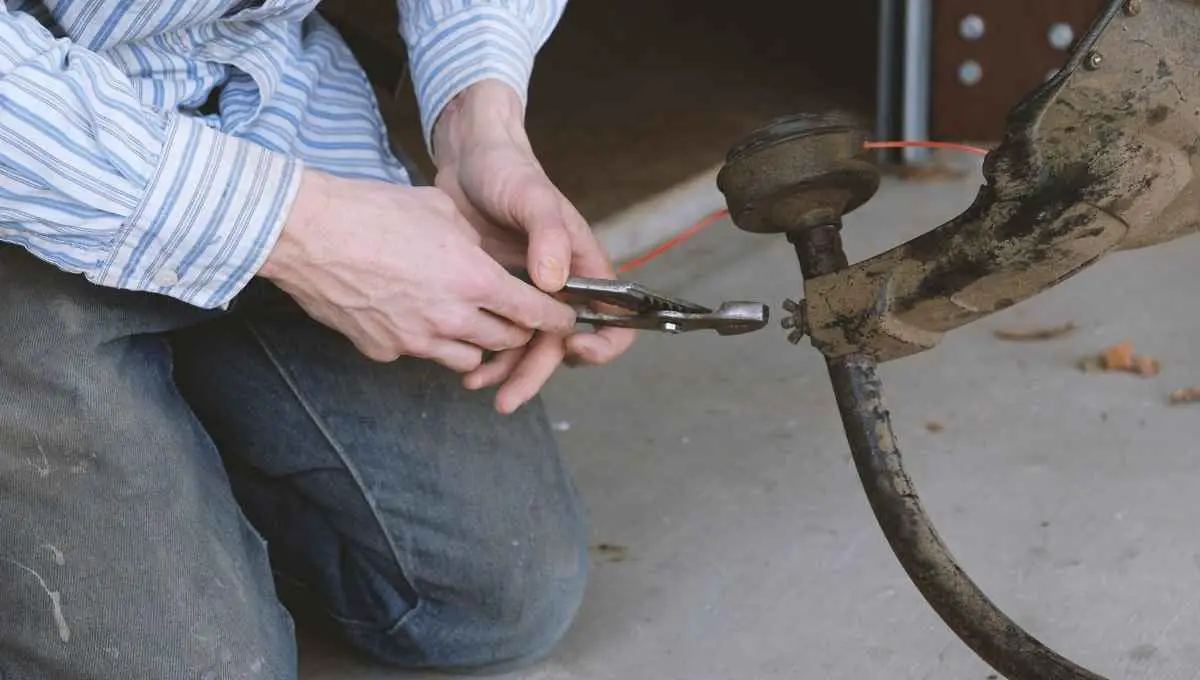
Weed eaters are a handy tool to have around the yard, but they can also be dangerous if not used correctly. If you happen to get your finger caught between the spinning blades of a weed eater, it can give you a pretty nasty cut. Can a weed eater cut your finger off completely, though?
Most weed eaters do not generate enough force to cut off a finger. A weed eater uses a trimmer head with plastic strings attached at the ends. Although these strings rotate incredibly fast, they do not generate the force necessary to cut through bone.
While weed eaters are not strong enough to cut off fingers, they can still cause some serious damage. In this blog post, we’ll discuss some safety tips and precautions you should take when using a weed eater to avoid any serious injuries.
This post contains affiliate links from Amazon and other stores. This means Yard Blogger may earn a commission if you make a purchase using any of our links. Please refer to our full affiliate disclosure policy for full details.
Here’s a Quick Pro Tip!
Using a weed eater is not unsafe if you’re wearing appropriate clothes and you are always aware of your surroundings. That means constantly checking that people are not too close and wearing safety gear.
Our top apparel items for safety when using a weed eater:
1. Safety glasses –Your eyes are very vulnerable and should always be protected.
2. Safety boots – To protect your legs and shins from cuts.
3. Safety gloves – To protect your hands from cuts and bruises.
Weed Eaters and Injuries
Weed eaters are a part of most homeowners’ lawn care arsenal. However, you might still have some questions regarding the safety of weed eaters. In this section, we’ll dive right into the details.
Are Weed Eaters Safe?
Weed eaters can be quite unsafe if used inappropriately. The tool uses rapidly spinning microfilament or nylon strings that cut grass and weeds. However, these rapidly spinning strings can cause contusions or abrasions to the head or eyes.
Injuries to the eyes are very common since the weed eater shoots up any pebbles or debris in its path with extremely high velocity.
These strings that spin extremely fast can also cut your leg quite badly.
Can You Cut Yourself With a Weed Eater?
You can cut yourself with a weed eater, but not in such a way that you would need serious medical attention. The fast-spinning nylon strings can leave cuts on your legs, but if you use protection, you should be safe.
We would recommend wearing thick boots when using a weed eater. Also, wear pants that cover your entire legs, like a pair of jeans.
Of course, you could put one on before weed-eating and take it off immediately again, but it will definitely protect your legs.
What Happens if a Weed Eater Hits You?
If you feel or notice a weed eater cutting you, turn off the machine and check the damage. Of course, you should seek medical attention if it’s a serious injury, but in most cases, a weed eater cut is not that serious.
A weed eater can cut quite deep, though, so there might be some tissue damage. If you’re second-guessing the injury’s severity, go to the doctor.
The plastic strings spin incredibly fast, and they can cause some damage without protection.
What Should You Wear While Using a Weed Eater?
To protect yourself from a weed eater, you should cover your body as much as possible. In addition, your eyes are vulnerable and likely to be injured by a weed eater, so safety glasses are a must.
Along with wearing safety glasses, you should wear long pants and long sleeve tops. You would want to protect as much skin as possible to prevent cut marks or bruises on your arms and legs.
Can You Be Seriously Injured by a Weed Eater?
Weed eaters can cause serious eye injuries when the fast spinning strings shoot debris up and potentially in the eye. Malfunctioning weed eaters can be particularly dangerous as it may result in flying parts that could injure anyone nearby.
That being said, if you wear appropriate safety gear, you should be safe from most weed eater injuries. You should also regularly do a maintenance check on your weed eater.
Change the oil, replace clogged filters and clean the spark plugs if needed.
What Can a Weed Eater Cut?
As the name implies, a weed eater can cut overgrown grass, brush, and weeds. It’s also known as a weed trimmer and uses fast-spinning nylon strings to cut grass or weeds.
A weed eater is an ideal tool to cut grass in spots where your lawn mower can not. This is usually where your house makes a corner or the grass directly surrounding a tree or mailbox.
Of course, you could also use a weed eater to cut all the grass on your lawn, but it might take a while.
Weed Eater Safety Tips?
The most important tip is to wear appropriate safety gear. Wear protective safety glasses over your eyes to protect your eyes from any flying debris. Also, wear clothes that cover your arms and legs completely to prevent cuts.
When using a weed eater, be sure there are no other people within 50 feet of you. Check for neighbors in their yards or little kids running around.
Flying debris could injure anyone standing too close.
To Guard or not to guard
Weed eater guards are one of the most debated topics regarding lawn care. To leave the guard on or take it off, which is best? Well, the answer is not that simple.
Read this section to find out why many professionals swear by it.
Can I Use a Weed Eater Without a Guard?
Taking the guard off your weed eater would not diminish the machine’s capabilities. In fact, many pros say they prefer taking the guard off when weed-eating their lawn.
However, you should be aware that removing the guard puts you or anyone nearby at a greater risk for injuries.
The guard is designed to protect your legs from debris kicked up by the plastic strings. If the guard is missing, your legs could get pretty cut up, not to mention dirty.
Should I Use a Guard While Weed-Eating?
According to the instructions of weed eater manufacturers, you should use it with the guard installed. However, many lawn care enthusiasts proclaim ditching the guard is the best way to finish the job quicker.
Although this might be true, removing the guard also has some cons. The guard is designed to protect your legs, so without it, your legs would be more vulnerable to cuts.
If you wear pants, they’ll probably get a lot dirtier. Plus, soil and grass constantly get thrown onto your legs.
Should I Take the Guard off My Weed Eater?
It’s a personal preference whether you should keep your guard on your weed eater. Manufacturers of weed eaters do recommend using it for safety reasons, but if you wear proper safety gear, it should not be a problem to take it off.
Professional lawn carers claim that removing the guard allows you to attach a longer string, thus cutting a larger area at a time.
They also claim that removing the guard makes edging your lawn much easier.
Why Do Weed Eaters Have Guards?
Weed eaters have guards to protect you from the extremely fast-spinning plastic strings. It also blocks any pebbles or debris flung upwards by these strings.
Of course, no guard is perfect, you still have the chance of getting cuts or injuries with a guard on your weed eater, but it greatly reduces the possibilities of an injury.
The guards also control the amount of lineout, meaning less stress on the engine.
What Is the Guard on a Weed Eater?
The guard on a weed eater is a piece of material placed over the rotating mechanism and extremely fast rotating strings of a weed eater. It is designed to protect your shins and your body from injury.
It also takes less strain off the engine, increasing the weed eater’s life. We would not recommend taking the guard off your machine unless it is for a specific reason, like edging your lawn.
What Is the Guard on a Weed Eater Used For?
The guard on a weed eater is designed to protect your legs from debris and dirt that the spinning strings tend to kick up. Although it is not essential to run your weed eater, you can use it without a guard.
We do not recommend intentionally removing the guard from your weed eater, as this does increase the injury risk for the person using it and anyone nearby.
If your guard breaks, though, you don’t have to sprint to the hardware store to buy a new one.
Protecting Yourself
You’ve probably discerned from this article that safety is very important when using a weed eater.
So, naturally, this section will delve into safety tips and precautions you should follow when using this machine.
How Do I Protect Myself While Weed-Eating?
Being dressed appropriately is key to protecting yourself while weed-eating. This means wearing a long sleeve shirt (or jacket) and pants with long legs that cover up as much skin as possible on your body.
Also, buy a few safety glasses and use one when weed-eating.
According to the Journal of Safety Research, 42.5% of injuries between 200-2009 caused by a weed eater were directly related to the eyes.
What Happens if a Weed Eater Hits You?
A weed eater usually causes a cut on your legs or shin when a weed eater hits you. The plastic strings cut deep enough to break the skin but not much deeper than that. It’s not powerful enough to cut off your finger, but it might leave a deep cut.
If a weed eater hits your finger or any other body part, and blood is oozing out with a lot of force, it might have hit something important.
Try to staunch the bleeding, but if the bleeding continues for more than 20 minutes, you should seek medical help.
How to Treat a Weed Eater Injury?
If you have a serious injury to the eye or any vulnerable area, you should seek medical attention. If your weed eater has cut you on your legs, a doctor wouldn’t be necessary. You should only try to keep the wound clean.
Do not let the weed eater shoot dirt in or near the wound. This might cause an infection down the line.
Instead, wear long pants or cover your cut with a bandaid. It should heal by itself in a week or two.
How to Treat a Leg Injury Caused by a Weed Eater?
In most cases, a weed eater’s injury to the leg is not that serious. This is because the nylon strings do not generate enough force to slice up your legs seriously. So keeping the cuts clean should be enough treatment.
Keep an eye on your cuts for the first few days after your injury, and make sure they start healing.
Also, look for signs of a possible infection, like pus flowing out of the cut or an unpleasant odor from the wound.
How Do I Protect Myself While Weed-Eating?
Wear safety glasses while weed-eating to protect your eyes. They are the most vulnerable part of your body when weed-eating, as the machine can cause serious injury to your eyes.
The weed eater cannot cut off a finger but keep your hands away from the nylon strings in any case. Wear long clothes that cover as much skin as possible to avoid cuts on your legs or arms.
You might also enjoy our post on What Kills Weeds Permanently?
Related Questions
How Do You Protect Trees From a Weed Eater?
To protect a tree from a weed eater, you can surround it with mulch. This prevents weeds from sprouting up. Thus it’s not necessary to weed-eat too close to the tree. Just be sure that you do this properly.
If you weed-eat too close to a tree, the plastic strings will start to cut, eventually leading to the tree dying.
For particularly young trees, you could place a plastic bark protector around the tree to prevent it from being cut.
How Fast Does a Weed Eater Throw a Rock?
A weed eater spins at around 1200 RPM, and although that is not enough to cut a finger off, it is enough to propel small to medium-sized rocks. These rocks can shoot up against anything nearby.
Cars, windows, and even humans can suffer injuries from a weed eater throwing a rock or two at them.
Therefore, keeping your guard on your weed eater and wearing the appropriate safety gear when using this machine is important.
Do You Need to Be Strong to Use a Weed Eater?
You don’t have to be particularly strong to use a weed eater. Experts agree that children under 14 should not be allowed to use lawn care equipment. However, any healthy adult or teenager would be strong enough to use a weed eater.
Weed eaters and other lawn care equipment should be kept out of reach of children younger than 14. Accidental injuries are a real and common occurrence.
A weed eater is easy to use if you use it properly and follow the manufacturer’s instructions.
Final Thoughts
All in all, even though the weed eater strings generate a lot of force, it is not enough to cut off your finger.
However, this is a cautionary white lie many parents tell young children to deter them from playing with the weed eater. We hope this article helps you be safe next time you weed eat!





